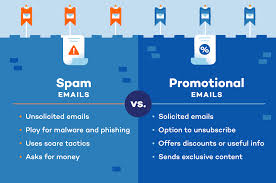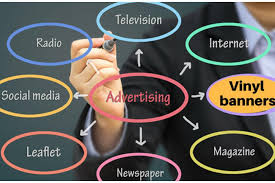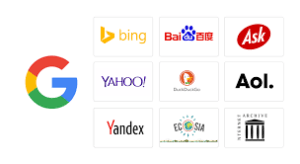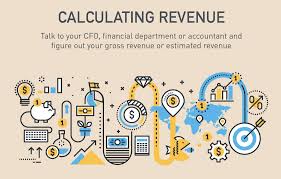 After learning the basics about getting started in marketing, one must learn a few Tips and Tricks for Affiliate Success. Certain questions should be answered, such as:
After learning the basics about getting started in marketing, one must learn a few Tips and Tricks for Affiliate Success. Certain questions should be answered, such as:
- What are affiliate programs for a target website?
- What types of control are over affiliate activity?
- Which Affiliate Program is most Successful for me?
This post contains affiliate links, which mean if you use these links to purchase an item or service I receive a commission at no extra cost to you. Visit my Affiliate Disclaimer page here.
Image by Cool Text: Logo and Button Generator – Create Your Own Logo
Affiliate Programs for a Target Website
 There are three primary ways to locate affiliate programs for a target website:
There are three primary ways to locate affiliate programs for a target website:
- Affiliate program directories,
- Large affiliate networks that provide the platform for dozens or even hundreds of advertisers, and
- The target website itself. Websites that offer an affiliate program often have a link—usually in the footer or “About” section of the website, titled:
- Affiliate Program – also known as pay for performance advertising, is a form of advertising in which the purchaser pays only when there are measurable results. Performance-based advertising is becoming more common with the spread of electronic media, notably the Internet, where it is possible to measure user actions resulting from advertisement. Performance Marketing is different from Brand Marketing which focuses on awareness, consideration and opinions among target consumers.
- Affiliates -The term affiliate is used to describe the relationship between two entities wherein one owns less than a majority stake in the other’s stock. Affiliations can also describe a type of relationship in which at least two different companies are subsidiaries of a larger parent company.
- Referral Program – the method of promoting products or services to new customers through referrals, usually word of mouth. Such referrals often happen spontaneously but businesses can influence this through appropriate strategies.
- Webmasters – a person responsible for maintaining one or more websites. The title may refer to web architects, web developers, site authors, website administrators, website owners, website coordinators, or website publishers. The duties of a webmaster may include: ensuring that the web servers, hardware and software are operating correctly, designing the website, generating and revising web pages, A/B testing, replying to user comments, and examining traffic through the site. Webmasters of commercial websites may also need to be familiar with e-commerce software.
 If the above locations do not yield information pertaining to affiliates, it may be the case that there exists a non-public affiliate program. Utilizing one of the common processes used to identify websites that are similar or related.
If the above locations do not yield information pertaining to affiliates, it may be the case that there exists a non-public affiliate program. Utilizing one of the common processes used to identify websites that are similar or related.
Websites are inherently easy to duplicate. This led to proliferation of identical websites or very similar websites for purposes ranging from translation to Internet marketing to Internet crime Locating similar websites is inherently problematic because they may be in different languages, on different servers, in different countries.
These methods may also provide clues about the affiliate network. The most definitive method for finding this information is to contact the website owner directly if a contact method can be located.
Control Over Affiliate Activity
Since the emergence of affiliate marketing, there has been little control over affiliate activity. Unscrupulous affiliates have used:
- Spamming – the use of messaging systems to send an unsolicited message (spam) to large numbers of recipients for the purpose of commercial advertising, for the purpose of non-commercial proselytizing, or for any prohibited purpose. While the most widely recognized form of spam is email spam, the term is applied to similar abuses in other media: instant messaging spam, Usenet newsgroup spam, Web search engine spam, spam in blogs, wiki spam, online classified ads spam, mobile phone messaging spam, Internet forum spam, junk fax transmissions, social spam, spam mobile apps, television advertising and file sharing spam. It is named after Spam, a luncheon meat, by way of a Monty Python sketch about a restaurant that has Spam in almost every dish and where vikings annoyingly sing “Spam” over and over again.
- False advertising – the use of false, misleading, or unproven information to advertise products to consumers. The advertising frequently does not disclose its source. One form of false advertising is to claim that a product has a health benefit or contains vitamins or minerals that it in fact does not. Many governments use regulations to control false advertising. A false advertisement can further be classified as deceptive if the advertiser deliberately misleads the consumer, as opposed to making an honest mistake.
 which are forced clicks to get tracking cookies, also known as an HTTP cookie, which is a small piece of data stored on the user’s computer by the web browser while browsing a website. Cookies were designed to be a reliable mechanism for websites to remember stateful information or to record the user’s browsing activity. They can also be used to remember pieces of information that the user previously entered into form fields, such as names, addresses, passwords, and payment card numbers.
which are forced clicks to get tracking cookies, also known as an HTTP cookie, which is a small piece of data stored on the user’s computer by the web browser while browsing a website. Cookies were designed to be a reliable mechanism for websites to remember stateful information or to record the user’s browsing activity. They can also be used to remember pieces of information that the user previously entered into form fields, such as names, addresses, passwords, and payment card numbers.
Adware, often called advertising-supported software by its developers, is software that generates revenue for its developer by automatically generating online advertisements in the user interface of the software or on a screen presented to the user during the installation process.
The software may generate two types of revenue:
- one is for the display of the advertisement
- and another on a “pay-per-click” basis,
if the user clicks on the advertisement. Some advertisements also act as spyware, collecting and reporting data about the user, to be sold or used for targeted advertising or user profiling.
 The software may implement advertisements in a variety of ways, including a static box display, a banner display, full screen, a video, pop-up ad or in some other form. All forms of advertising carry health, ethical, privacy and security risks for users.
The software may implement advertisements in a variety of ways, including a static box display, a banner display, full screen, a video, pop-up ad or in some other form. All forms of advertising carry health, ethical, privacy and security risks for users.
Of course there are other methods to drive traffic to their sponsors. Although many affiliate programs have Terms of service, which are the legal agreements between a service provider and a person who wants to use that service. The person must agree to abide by the terms of service in order to use the offered service. Terms of service can also be merely a disclaimer, especially regarding the use of websites.
Terms of service contain rules against spamming, the use of messaging systems to send an unsolicited message known as spam, to large numbers of recipients for the purpose of commercial advertising, for the purpose of non-commercial proselytizing, or for any prohibited purpose.
While the most widely recognized form of spam is email spam, the term is applied to similar abuses in other media:
- Instant messaging spam

- Usenet newsgroup spam
- Web search engine spam
- Spam in blogs
- Wiki spam
- Online classified ads spam
- Mobile phone messaging spam
- Internet forum spam
- Junk fax transmissions

- Social spam
- Mobile apps spam
- Television advertising and file sharing spam
It is named after Spam, a luncheon meat, by way of a Monty Python sketch about a restaurant that has Spam in almost every dish and where vikings annoyingly sing “Spam” over and over again, this marketing method has historically proven to attract abuse from spammers.
Which are the Most Successful Programs for you?
Affiliate Tracking Software
Affiliate Tracking Software is used to track the referral, endorsement or recommendation made by one person or company to buy products or services from another person or company. Tracking is necessary to manage and reward or compensate the participants of an affiliate marketing group of participants or affiliate networks. The original concept comes from Affinity marketing. The participants that agree to promote or be promoted are called “affiliates“. Those that promote and recommend are called “marketers” and the ones that have the products or services that are promoted are called “advertisers”.
Internet advertising
 Email spam, also referred to as junk email, is unsolicited messages sent in bulk by email (spamming).
Email spam, also referred to as junk email, is unsolicited messages sent in bulk by email (spamming).
Email marketing, the act of sending a commercial message, typically to a group of people, using email. In its broadest sense, every email sent to a potential or current customer could be considered email marketing. It involves using email to send advertisements, request business, or solicit sales or donations. Email marketing strategies commonly seek to achieve one or more of three primary objectives, to build loyalty, trust, or brand awareness. The term usually refers to sending email messages with the purpose of enhancing a merchant’s relationship with current or previous customers, encouraging customer loyalty and repeat business, acquiring new customers or convincing current customers to purchase something immediately, and sharing third-party ads.
Post-click marketing is emerging as a recognized practice that aims at improving sales and marketing results by focusing on website visitors when they respond to online marketing activities such as pay per click advertising, HTML e-mails, and paid searches with the objective on increasing conversion rates.
Website monetization is the process of converting existing traffic being sent to a particular website into revenue. The most popular ways of monetizing a website are by implementing pay per click (PPC) and cost per impression (CPI/CPM) advertising. Various ad networks facilitate a webmaster in placing advertisements on pages of the website to benefit from the traffic the site is experiencing.
Advertising methods
 Ad blocking or ad filtering is a software capability for removing or altering online advertising in a web browser or an application. The most popular ad blocking tools are browser extensions. Other methods are also available.
Ad blocking or ad filtering is a software capability for removing or altering online advertising in a web browser or an application. The most popular ad blocking tools are browser extensions. Other methods are also available.
Ad serving describes the technology and service that places advertisements on Web sites. Ad serving technology companies provide software to Web sites and advertisers to serve ads, count them, choose the ads that will make the Web site or advertiser the most money, and monitor the progress of different advertising campaigns. Ad servers are divided into two types—publisher ad servers and advertiser ad servers.
Pop-up ads or pop-ups are forms of online advertising on the World Wide Web. A pop-up is a graphical user interface (GUI) display area, usually a small window, that suddenly appears in the foreground of the visual interface. The pop-up window containing an advertisement is usually generated by JavaScript that uses cross-site scripting (XSS), sometimes with a secondary payload that uses Adobe Flash. They can also be generated by other vulnerabilities/security holes in browser security.
Contextual advertising is a form of targeted advertising for advertisements appearing on websites or other media, such as content displayed in mobile browsers.In context targeting, advertising media are controlled on the basis of the content of a website using linguistic elements.The advertisements themselves are selected and served by automated systems based on the context of what a user is looking at.
A web banner or banner ad is a form of advertising on the World Wide Web delivered by an ad server. This form of online advertising entails embedding an advertisement into a web page. It is intended to attract traffic to a website by linking to the website of the advertiser. In many cases, banners are delivered by a central ad server. When the advertiser scans their logfiles and detects that a web user has visited the advertiser’s site from the content site by clicking on the banner ad, the advertiser sends the content provider some small amount of money. This payback system is often how the content provider is able to pay for the Internet access to supply the content in the first place. Usually though, advertisers use ad networks to serve their advertisements, resulting in a revshare system and higher quality ad placement.
Marketing tactics
 Guerrilla marketing is an advertisement strategy in which a company uses surprise and/or unconventional interactions in order to promote a product or service. It is a type of publicity. The term was popularized by Jay Conrad Levinson’s 1984 book Guerrilla Marketing.
Guerrilla marketing is an advertisement strategy in which a company uses surprise and/or unconventional interactions in order to promote a product or service. It is a type of publicity. The term was popularized by Jay Conrad Levinson’s 1984 book Guerrilla Marketing.
Marketing strategy is a long-term, forward-looking approach and an overall game plan of any organization or any business with the fundamental goal of achieving a sustainable competitive advantage by understanding the needs and want of customers.
Evangelism marketing is an advanced form of word-of-mouth marketing in which companies develop customers who believe so strongly in a particular product or service that they freely try to convince others to buy and use it. The customers become voluntary advocates, actively spreading the word on behalf of the company.
Viral marketing or viral advertising is a business strategy that uses existing social networks to promote a product. Its name refers to how consumers spread information about a product with other people, much in the same way that a virus spreads from one person to another. It can be delivered by word of mouth, or enhanced by the network effects of the Internet and mobile networks.
Word-of-mouth marketing differs from naturally occurring word of mouth, in that it is actively influenced or encouraged by organizations. While it is difficult to truly control WOM, research has shown that there are three generic avenues to ‘manage’ WOM for the purpose of WOMM: 1.) Build a strong WOM foundation, 2.) Indirect WOMM management which implies that managers only have a moderate amount of control, 3.) Direct WOMM management, which has higher levels of control. Proconsumer WOM has been suggested as a counterweight to commercially motivated word of mouth.
Search engines
 Search engine marketing (SEM) is a form of Internet marketing that involves the promotion of websites by increasing their visibility in search engine results pages (SERPs) primarily through paid advertising. SEM may incorporate search engine optimization (SEO), which adjusts or rewrites website content and site architecture to achieve a higher ranking in search engine results pages to enhance pay per click (PPC) listings.
Search engine marketing (SEM) is a form of Internet marketing that involves the promotion of websites by increasing their visibility in search engine results pages (SERPs) primarily through paid advertising. SEM may incorporate search engine optimization (SEO), which adjusts or rewrites website content and site architecture to achieve a higher ranking in search engine results pages to enhance pay per click (PPC) listings.
Search engine optimization (SEO) is the process of growing the quality and quantity of website traffic by increasing the visibility of a website or a web page to users of a web search engine. SEO refers to the improvement of unpaid results and excludes direct traffic and the purchase of paid placement. Additionally, it may target different kinds of searches, including image search, video search, academic search, news search, and industry-specific vertical search engines. Promoting a site to increase the number of backlinks, or inbound links, is another SEO tactic. By May 2015, mobile search had surpassed desktop search.
Pay-per-click (PPC) is an internet advertising model used to drive traffic to websites, in which an advertiser pays a publisher when the ad is clicked.
Click fraud is a type of fraud that occurs on the Internet in pay-per-click (PPC) online advertising. In this type of advertising, the owners of websites that post the ads are paid an amount of money determined by how many visitors to the sites click on the ads. Fraud occurs when a person, automated script, or computer program imitates a legitimate user of a web browser, clicking on such an ad without having an actual interest in the target of the ad’s link. Click fraud is the subject of some controversy and increasing litigation due to the advertising networks being a key beneficiary of the fraud.
Paid inclusion is a search engine marketing product where the search engine company charges fees related to inclusion of websites in their search index. The use of paid inclusion is controversial and paid inclusion’s popularity has decreased over time among search engines.
Industry calculations
 Click-through rate (CTR) is the ratio of users who click on a specific link to the number of total users who view a page, email, or advertisement. It is commonly used to measure the success of an online advertising campaign for a particular website as well as the effectiveness of email campaigns.
Click-through rate (CTR) is the ratio of users who click on a specific link to the number of total users who view a page, email, or advertisement. It is commonly used to measure the success of an online advertising campaign for a particular website as well as the effectiveness of email campaigns.
Cost per action (CPA), also sometimes misconstrued in marketing environments as cost per acquisition, is an online advertising measurement and pricing model, referring to a specified action – for example a sale, click, or form submit
Cost-per-click (CPC) is an internet advertising model used to drive traffic to websites, in which an advertiser pays a publisher when the ad is clicked.
Cost per thousand impressions (CPM), is a term used in traditional advertising media selection, as well as online advertising and marketing related to web traffic. It refers to the cost of traditional advertising or internet marketing or email advertising campaigns, where advertisers pay each time an ad is displayed. CPI is the cost or expense incurred for each potential customer who views the advertisement(s), while CPM refers to the cost or expense incurred for every thousand potential customers who view the advertisement(s). CPM is an initialism for cost per mille, with mille being Latin for thousand.
Cost per mille (CPM), also called cost per thousand (CPT), is a commonly used measurement in advertising. It is the cost an advertiser pays for one thousand views or clicks of an advertisement. Radio, television, newspaper, magazine, out-of-home advertising, and online advertising can be purchased on the basis of exposing the ad to one thousand viewers or listeners. It is used in marketing as a bench-marking metric to calculate the relative cost of an advertising campaign or an ad message in a given medium.
In Closing
As people talk about getting started in Affiliate Marketing, they must really consider all that is involved within the marketing community. These considerations involve Affiliate Programs for a Target Website, Control Over Affiliate Activity, as well as considering Which are the Most Successful Programs for you. Hopefully, this information becomes a wealth of knowledge for all of us. Thank you for your attention, and your time as well.
I hope that you have really enjoyed this post, you might also be interested in other information which can be found in JMJ45TECH’s ONLINE STORE.
Please Leave All Comments in the Comment Box Below ↓









Becoming successful as an affiliate marketer is not so easy, and sometimes we need the kind of advice that you are giving here for us to get the amount of success that can get us to that great place and find us a stop with the elites.
Your tips and tricks are all really good and I really appreciate it very much too.
Thanks!
Good afternoon,
Thank you! Happy to read that you like Tips and Tricks for Affiliate Success.
Please Have A Blessed Day!
Whooo what an interesting article,
I did not know about some of the affiliate programs you mentioned and how to implement some of your suggestions.
It is hard to learn everything about Affiliate Marketing; new things are always coming on the market and we got to keep up, otherwise we will be left behind.
I really enjoyed reading your article it had a lot of useful details in it. This article is a must read for any Affiliate Marketer.
Elke
Hello Elke,
Thanks for your valued opinion, as well as, your enjoyment reading this article.
Please Have A Blessed Journey,
Jerry
Jerry, this is a great post, especially for aspiring affiliate marketers.
For anyone new to the space, the transparency of your article is great to show awareness of what to expect!
So many different affiliate programs and websites, it’s really hard to figure out where to start.
But reading your article gives a good understanding of how to gain success, especially trying to understand terms and the language used!
Thank you so much for sharing.
Hello,
Thank you for considering Tips and Tricks for Affiliate Success a great post. It pleases me to learn that this article gave you a good understanding of how to gain success.
You are most certainly welcome for the sharing of this information.
Thank you for commenting,
Please Have A Blessed Day,
Jerry
I also do affiliate marketing.
So, as an affiliate marketer, the tips given in this post are very valuable. Also, I have not used pop-up ads like that yet. I was going to use it in the future.
Your post has a lot of good information about them. There is also information about PPC ads.
Thank you so much for putting up such a valuable post. I will definitely be sharing this.
Keep posting like this.
Hello,
You are most certainly welcome for the sharing of such a valuable post with a lot of good information, and thank you for considering it in this way.
Speaking of pop-up ads, you should have seen one on the website you read this post on.
I plan to keep posting, so you can keep sharing, as well as, commenting.
Blessings To You,
Jerry
There are so many affiliate programs and websites available these days, that beginners can often find it difficult and confusing to know where to start.
Your tips and tricks will certainly help affiliates to become successful.
Marketing tactics, like guerilla marketing and evangelism marketing, are new to me, as well as the different advertising methods. These methods will make it easier for an affiliate to earn revenue from a website.
Thank for sharing your knowledge.
Hello,
I certainly agree that there are so many affiliate programs and websites available these days, and not to mention the constant change with technology.
It pleases me to be of any help in the move forward.
Thank you for your comment.
Blessings,
Jerry